How to use, read & adjust a Kincrome torque wrench
Date Posted:11 January 2024

A Kincrome torque wrench is a precision tool used in various industries and applications, including automotive, construction, manufacturing, and engineering. It applies a specific amount of torque or rotational force to fasteners such as bolts and nuts. The correct use of a torque wrench is crucial for the integrity and safety of structures, machinery, and equipment. It ensures that fasteners are tightened with the appropriate amount of force, preventing both over-tightening and under-tightening.

Benefits of Using a Torque Wrench
-
Accurate Fastening: A torque wrench allows for precise torque measurements, ensuring proper fastening without damaging the fasteners or components they secure.
-
Prevents Over-Tightening: Over-tightening can lead to stripped threads, bolt failure, or structural damage. A torque wrench helps prevent these issues by providing controlled force application.
-
Prevents Under-Tightening: Under-tightened fasteners can loosen over time, compromising assembly stability and safety. By using a torque wrench, you can ensure appropriate tightening levels.
-
Maintains Safety: Properly torqued fasteners help maintain the structural integrity of machinery and equipment, reducing the risk of accidents or failures that could result in personal injury or property damage.
-
Optimises Performance: Many components and systems rely on specific torque requirements for optimal performance. By using a torque wrench, you can achieve desired torque settings and ensure efficient operation.
Importance of Knowing How to Use, Read, and Adjust a Torque Wrench
Knowing how to use, read, and adjust a Kincrome torque wrench is essential for several reasons:
Potential Risks of Improper Use or Calibration
-
Equipment Damage: Improper torque application can cause damage to fasteners, components, or equipment, leading to costly repairs or replacements.
-
Safety Hazards: Inadequately tightened fasteners may result in loose parts, vibrations, or structural failures that can endanger operators or bystanders.
-
Inaccurate Torque Measurements: If a torque wrench is not properly calibrated or adjusted, it may provide inaccurate torque readings, compromising the reliability and integrity of the fastening process.
Importance of Accurate Torque Measurements
Accurate torque measurements are crucial for:
-
Maintaining Safety: Properly torqued fasteners ensure the safe operation of machinery and equipment by preventing loosening or failure due to inadequate tightening.
-
Preventing Equipment Damage: Over-tightening can lead to stripped threads or broken fasteners while under-tightening can result in loose connections that affect the functionality and longevity of equipment.
-
Ensuring Optimal Performance: Many mechanical systems have specific torque requirements that must be met for optimal performance. Using a torque wrench allows you to achieve these specifications accurately.
In conclusion, understanding how to use, read, and adjust a Kincrome torque wrench is essential for maintaining safety, preventing equipment damage, and ensuring optimal performance. By following proper torque application techniques, you can achieve accurate and reliable fastening, avoiding the risks associated with improper torque measurements.
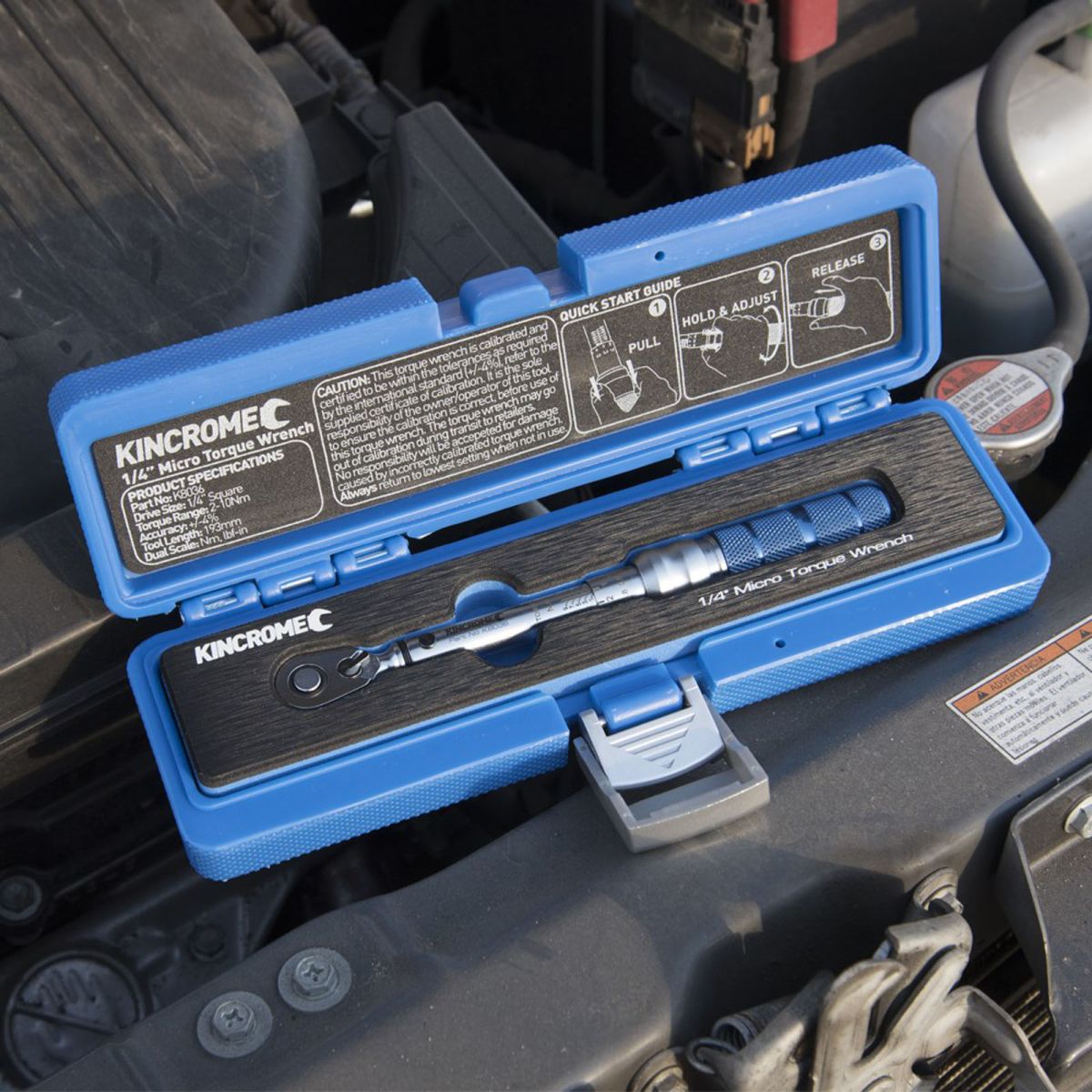
Understanding the Basics of a Kincrome Torque Wrench
Parts and Components of a Kincrome Torque Wrench
A Kincrome torque wrench consists of several essential parts and components that work together to ensure accurate torque measurements. Understanding each component's function is crucial for achieving precise and reliable results.
-
Handle: The handle is the main body of the torque wrench, providing a comfortable grip for the user. It allows for easy application of torque while maintaining control and stability.
-
Ratchet mechanism: The ratchet mechanism controls the direction of torque application. It enables tightening or loosening fasteners without removing the wrench from the bolt or nut.
-
Scale: The scale is a marked indicator that shows the applied torque. It is usually calibrated in Newton meters (Nm), foot-pounds (ft-lb), or inch-pounds (in-lb) based on the model.
-
Adjustment mechanism: The adjustment mechanism allows users to set the desired torque value. It enables precise and accurate adjustments according to manufacturer specifications or engineering guidelines.
Each component plays a vital role in achieving accurate torque readings. The handle provides comfort and control, while the ratchet mechanism ensures ease of use. The scale allows users to monitor applied torque, and the adjustment mechanism enables precise customisation based on specific requirements.
Types of Kincrome Torque Wrenches
Kincrome offers various types of torque wrenches, each designed for different applications and preferences. Understanding these types can help users choose the most suitable tool for their specific needs.
-
Click-type torque wrench: This type of torque wrench is the most common and widely used. It features a clicking sound and noticeable release of tension when the set torque value is reached. Click-type torque wrenches are ideal for general automotive and industrial applications.
-
Beam-type torque wrench: Beam-type torque wrenches use a simple mechanical design with a calibrated beam to indicate applied torque. They offer excellent accuracy and reliability, making them suitable for precision applications such as aerospace or laboratory settings.
-
Digital torque wrench: Digital torque wrenches provide digital readings of applied torque. They offer precise measurements and feature additional functionalities such as unit conversions and memory storage. These wrenches are commonly used in professional settings requiring highly accurate torque measurements.
Each type of Kincrome torque wrench has unique features and applications. Click-type torque wrenches are versatile and suitable for most tasks, while beam-type torque wrenches are favoured for their simplicity and accuracy. Digital torque wrenches offer advanced technology for demanding applications that require precise measurements.
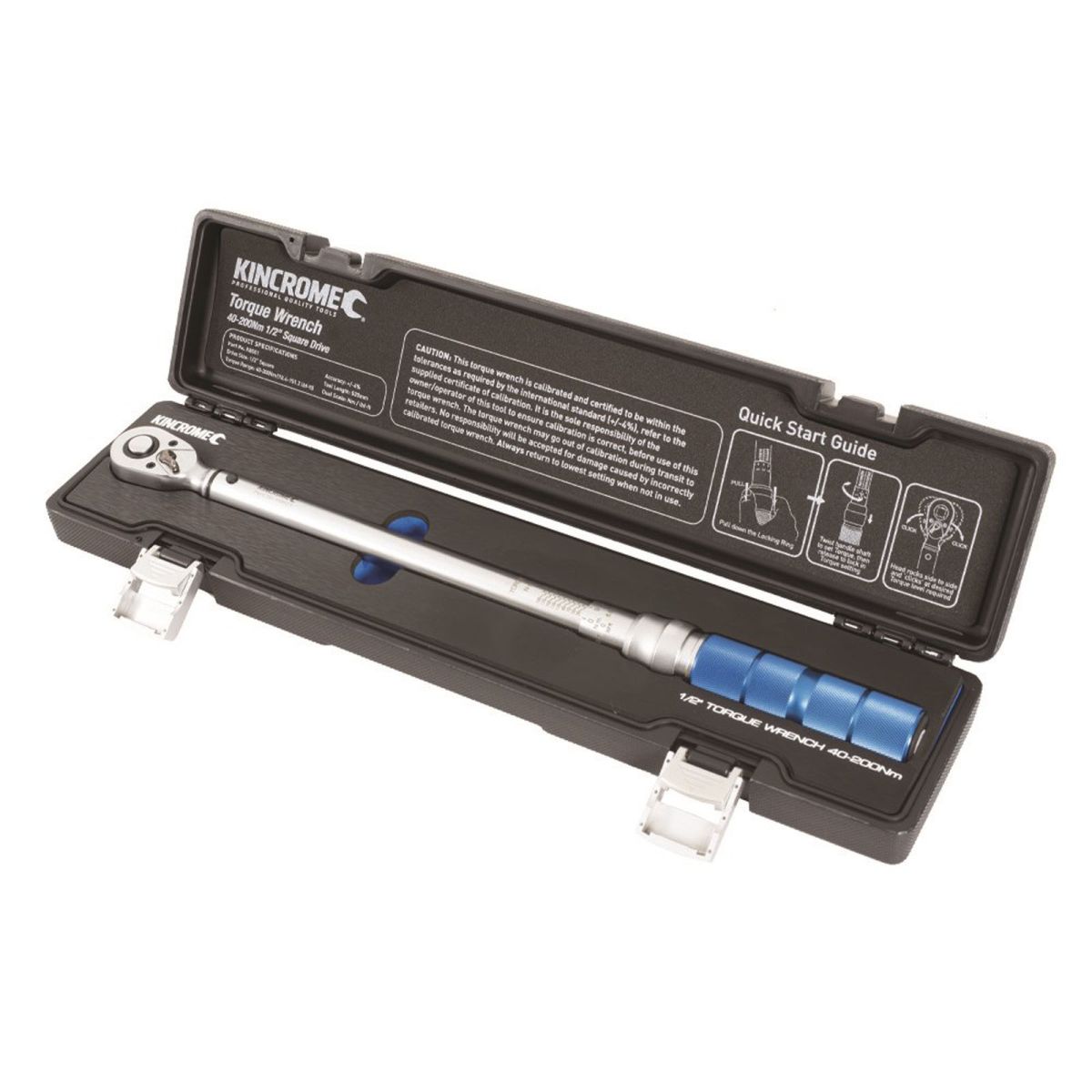
How to Use a Kincrome Torque Wrench
A Kincrome torque wrench is a powerful tool that allows precise tightening of bolts and nuts. Whether you're a professional mechanic or a DIY enthusiast, knowing how to use a torque wrench correctly is essential for accurate and consistent torque measurements. In this section, we'll provide a step-by-step guide on properly using a Kincrome torque wrench.
Step-by-Step Guide to Properly Using a Kincrome Torque Wrench
-
Select the appropriate torque setting: Before using the torque wrench, determine the correct torque specification for the fastener or application you're working on. This information can usually be found in the manufacturer's specifications or engineering guidelines. Adjust the scale or digital display to set the torque wrench to the desired torque value.
-
Attach the proper socket or adapter: Ensure you have the correct socket or adapter that fits securely onto the torque wrench. A loose connection can lead to inaccurate readings or damage to the fastener.
-
Apply the torque: Position the socket or adapter onto the fastener and hold the torque wrench handle firmly. Begin applying force smoothly and controlled, gradually increasing until you reach the desired torque setting. Pay attention to any audible clicks (if using a click-type torque wrench) or digital readings (if using a digital torque wrench) that indicate you've reached the set torque.
-
Release the tension: Once you've reached the desired torque setting, release the tension on the torque wrench handle. This step is essential to prevent over-tightening of the fastener.
Remember, maintaining a steady and controlled torque application is crucial for accurate measurements. Avoid jerky or sudden movements that can affect the torque readings. Additionally, be mindful of external factors such as temperature or lubrication that may impact the torque values.
Safety Precautions and Best Practices
While using a Kincrome torque wrench, prioritise safety and follow best practices to ensure tool longevity and accuracy.
-
Wear appropriate personal protective equipment (PPE): Always wear safety glasses and gloves when working with a torque wrench to protect yourself from potential hazards.
-
Avoid exceeding the torque limit: Each torque wrench has a specified torque limit, and it's crucial to adhere to it. Exceeding it can result in inaccurate readings, damage to fasteners or equipment, or even personal injury.
-
Proper storage of the torque wrench: After use, store your Kincrome torque wrench in a clean and dry place. Avoid exposure to extreme temperatures or moisture, which can affect its accuracy and performance.
By following these safety precautions and best practices, you can ensure a safe and reliable torque wrench experience while maximising its lifespan and accuracy.
Reading and Interpreting Torque Readings on a Kincrome Torque Wrench
When using a Kincrome torque wrench, it's important to understand how to read and interpret torque readings accurately. This ensures the correct torque application to fasteners, preventing under-tightening or over-tightening that can lead to safety hazards or equipment damage. In this section, we'll explore different units of torque measurement and guide you in determining the correct torque specification for your specific application.
Understanding Torque Units and Scales
A Kincrome torque wrench typically features a scale that indicates applied torque. To effectively read and interpret torque readings, you need to familiarise yourself with different units of torque measurement:
-
Newton meters (Nm): This is the SI unit of torque measurement used in many industries. It represents the force required to rotate an object around an axis.
-
Foot-pounds (ft-lb): This unit is widely used in the United States and represents the twisting force applied at one foot from the centre of rotation.
-
Inch-pounds (in-lb): Like foot-pounds, inch-pounds measure torque but at a smaller scale. They represent the twisting force applied one inch from the center of rotation.
When reading the torque scale on your Kincrome torque wrench, select and interpret the correct unit of measurement based on your specific requirements. This will help you apply the appropriate amount of torque to achieve desired results.
Determining the Correct Torque Specification
Each fastener or application has a recommended torque specification that ensures proper fastening and prevents potential issues. To determine the correct torque specification:
-
Consult Manufacturer Specifications: Manufacturers often provide torque specifications for their products, including recommended torque values for different fasteners. For this information, refer to the product manual or manufacturer's website.
-
Engineering Guidelines: In some cases, engineering guidelines or industry standards may provide torque recommendations for specific applications. These guidelines ensure optimal performance and safety.
It's crucial to follow the recommended torque specification provided by the manufacturer or engineering guidelines. Deviating from these recommendations can result in improper fastening, leading to safety risks or equipment failure.
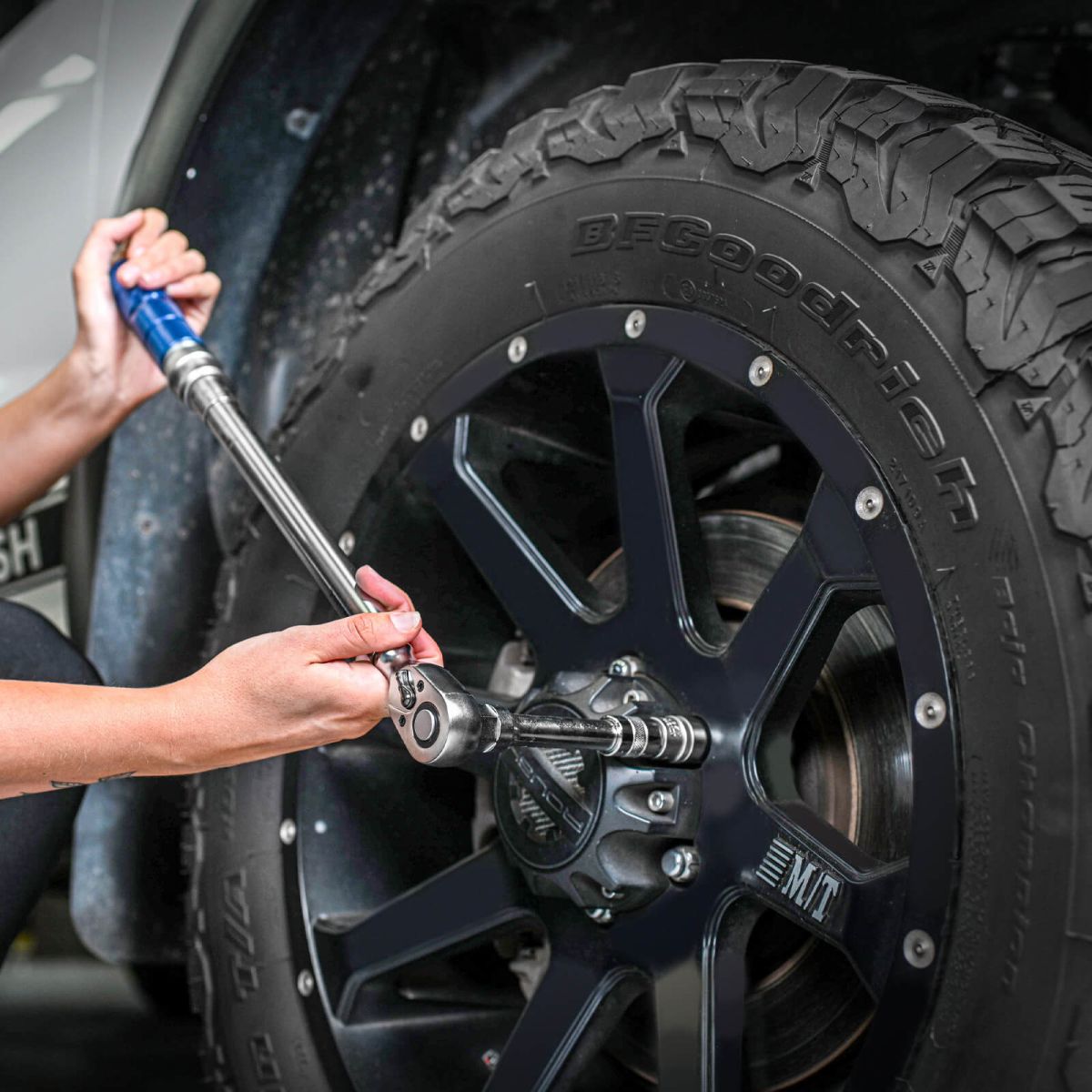
Adjusting a Kincrome Torque Wrench
To maintain the accuracy of your Kincrome torque wrench, it's necessary to calibrate or adjust it periodically. This ensures precise and reliable measurements. In this section, we'll discuss the calibration and adjustment process and the tools you can use to achieve accurate results.
Calibration and Adjustment Process
To calibrate or adjust your Kincrome torque wrench, follow this step-by-step guide:
-
Step 1: Verify the need for calibration
-
Before calibrating your torque wrench, ensure it actually requires calibration. Signs of a wrench needing calibration include inconsistent readings, unusual sounds during operation, or suspicion of inaccurate torque application. If you notice any of these signs, it's time to calibrate your torque wrench.
-
Step 2: Gather the necessary tools
-
Before starting the calibration process, gather the tools you'll need. These may include a torque wrench calibration tool, a torque tester, and a manufacturer's specification sheet for your specific torque wrench model.
-
Step 3: Set the torque value
-
Using the manufacturer's specification sheet or engineering guidelines, determine the correct torque value for calibration. Set your torque wrench to this value.
-
Step 4: Apply the load
-
Attach the torque wrench calibration tool to your torque wrench. Apply a known load to the calibration tool, corresponding to the torque value you set in the previous step.
-
Step 5: Compare the readings
-
While applying the load, compare the reading on your torque wrench to the known load applied. If there is a significant difference between the two, your torque wrench requires adjustment.
-
Step 6: Adjust the torque wrench
-
If your torque wrench requires adjustment, refer to the manufacturer's instructions for your specific model. Follow the steps carefully to adjust the wrench and return it to accurate readings. This may involve tightening or loosening specific components of the torque wrench.
-
Step 7: Re-test and verify
-
After making necessary adjustments, repeat the calibration process to ensure your torque wrench provides accurate readings. Compare the readings with the known load applied, and if they align closely, your torque wrench is calibrated and ready for use.
Using a Torque Wrench Calibration Tool
A torque wrench calibration tool is crucial for adjusting and calibrating your Kincrome torque wrench. It helps ensure your torque wrench provides accurate readings and applies precise torque values. Here are some key points about using a torque wrench calibration tool:
-
Role of the calibration tool: A torque wrench calibration tool serves as a reference point for applying a known load to your torque wrench. It allows you to compare the readings on your torque wrench with this known load and make any necessary adjustments.
-
Choosing a reliable calibration tool: When selecting a torque wrench calibration tool, look for one that is accurate, durable, and compatible with your specific torque wrench model. Check for certifications or endorsements from reputable organisations to ensure its reliability.
-
Availability in the market: There are various torque wrench calibration tools available in the market, ranging from simple mechanical devices to advanced digital testers. Research and choose the one that best suits your needs and budget.
By following the calibration and adjustment process using a torque wrench calibration tool, you can maintain the accuracy and reliability of your Kincrome torque wrench. Regular calibration ensures you achieve precise torque application, enhancing safety, preventing equipment damage, and ensuring optimal performance in various industries and applications.
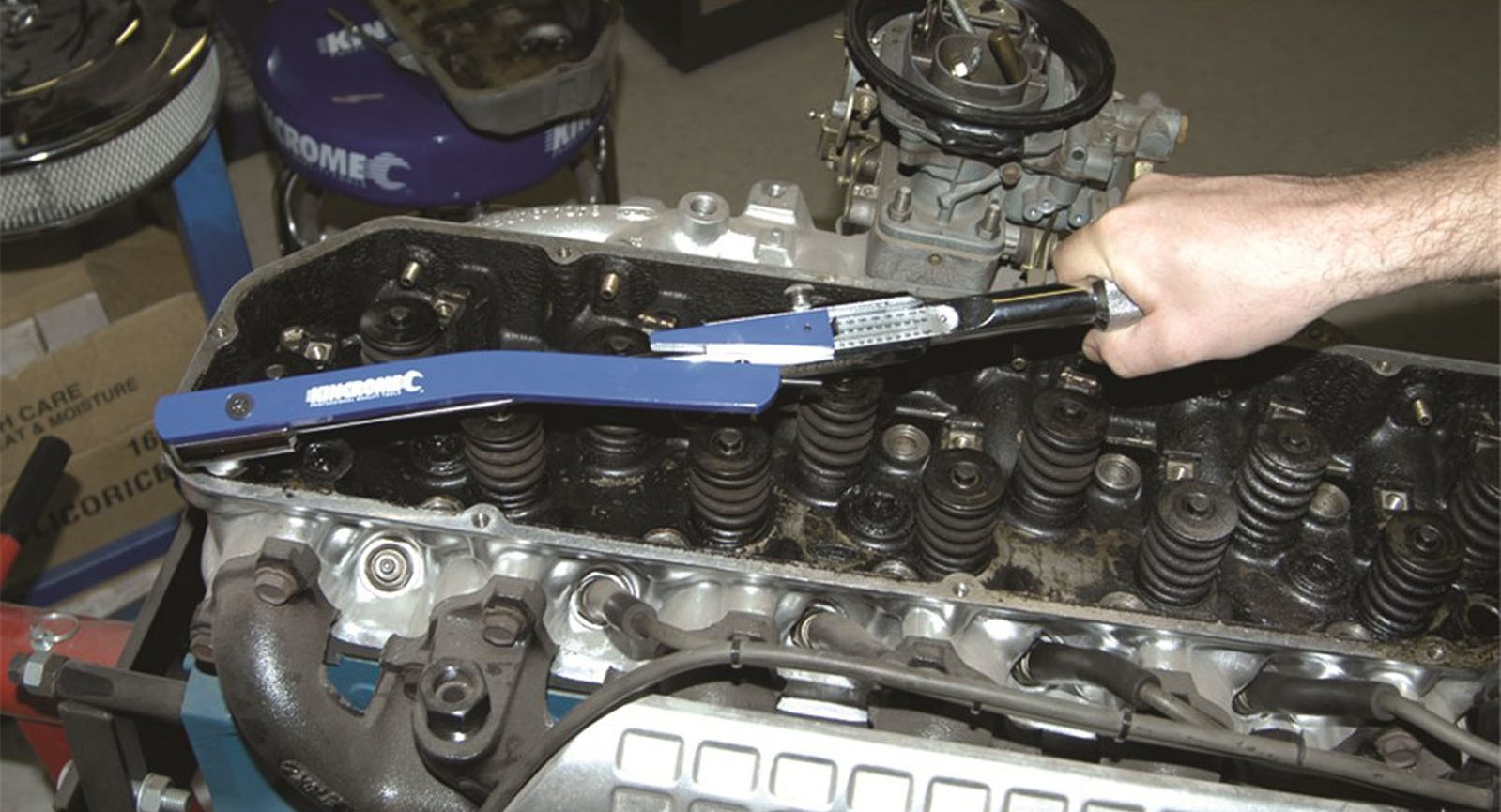
Common Mistakes to Avoid when Using a Kincrome Torque Wrench
Using a Kincrome torque wrench correctly is crucial for accurate fastening and preventing potential issues. However, common mistakes can compromise the effectiveness and reliability of this essential tool. By understanding and avoiding these mistakes, you can ensure accurate torque application and maximise the lifespan of your torque wrench.
1. Over-Tightening or Under-Tightening Fasteners
One of the most critical mistakes when using a Kincrome torque wrench is applying too much or too little torque to fasteners. Over-tightening can lead to stripped threads, bolt failure, or equipment malfunction. On the other hand, under-tightening can result in loose connections, compromising safety and performance.
To avoid these consequences, it is crucial to follow torque specifications provided by manufacturers or engineering guidelines. Set your torque wrench to the recommended torque value for each specific fastener. Remember, accuracy is key when it comes to torque application.
2. Not Properly Maintaining and Storing the Torque Wrench
Inadequate maintenance and storage practices can significantly impact the accuracy and lifespan of your Kincrome torque wrench. To ensure optimal performance, cleaning, lubricating, and storing your torque wrench properly is important.
-
Clean the torque wrench after each use using a soft cloth to remove dirt, debris, and any residual materials.
-
Lubricate moving parts regularly with a small amount of lubricating oil to prevent rusting and ensure smooth operation.
-
Store the torque wrench in a clean and dry environment, away from extreme temperatures, moisture, or direct sunlight.
By following these maintenance tips, you can extend the lifespan of your torque wrench and maintain its accuracy over time.
3. Ignoring Warning Signs of a Malfunctioning Torque Wrench
It's important to pay attention to any warning signs that indicate your Kincrome torque wrench may malfunction or need calibration. Ignoring these signs can lead to inaccurate torque readings and compromise safety and performance.
Some common warning signs to watch out for include:
-
Inconsistent or fluctuating torque readings
-
Difficulty in adjusting or locking the torque setting
-
Unusual noises or vibrations during use
If you encounter any of these issues, it is advisable to stop using the torque wrench and have it inspected or calibrated by a professional. Taking prompt action can help prevent further damage and ensure the reliability of your torque wrench.
By avoiding these common mistakes, you can confidently use your Kincrome torque wrench, knowing that you are achieving accurate torque application and maintaining its longevity. Remember, proper usage, maintenance, and calibration are key to unlocking the full potential of this indispensable tool.
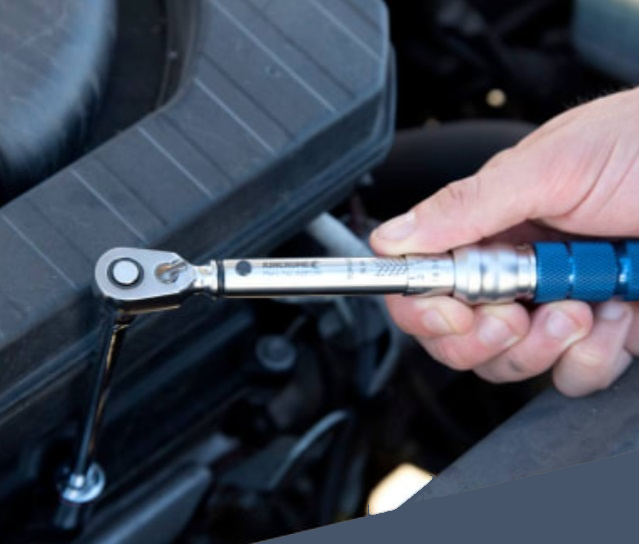
Conclusion
In conclusion, understanding how to use, read, and adjust a Kincrome torque wrench is essential for anyone working with fasteners in various industries and applications. By following proper techniques and guidelines, you can ensure accurate torque measurements, maintain safety, prevent equipment damage, and achieve optimal performance.
Summary of Key Points
-
A Kincrome torque wrench is a valuable tool used for achieving precise torque application in fastening tasks. It helps prevent over-tightening or under-tightening of bolts and nuts, ensuring proper fastening and reducing the risk of damage or failure.
-
Knowing how to use a Kincrome torque wrench involves selecting the appropriate torque setting, attaching the proper socket or adapter, applying the torque in a controlled manner, and releasing the tension properly. Following these steps will help you achieve accurate torque readings.
-
Proper torque application is crucial for safety and preventing equipment damage. Over-tightening or under-tightening fasteners can lead to stripped threads, bolt failure, or equipment malfunction.
-
Reading and interpreting torque readings on a Kincrome torque wrench requires understanding the different units of torque measurement, such as Newton meters (Nm), foot-pounds (ft-lb), and inch-pounds (in-lb). Referring to manufacturer specifications or engineering guidelines is important in determining the correct torque specification for a specific fastener or application.
-
Calibrating and adjusting a Kincrome torque wrench is necessary to ensure accuracy. Regular calibration helps maintain the reliability of the torque wrench. Using a torque wrench calibration tool can assist in the adjustment process.
-
Mistakes to avoid when using a Kincrome torque wrench include over-tightening or under-tightening fasteners, not properly maintaining and storing the torque wrench, and ignoring warning signs of a malfunctioning torque wrench. Following safety precautions and best practices will help maximise the tool's lifespan and accuracy.
Encouragement for Learning and Mastering Torque Wrench Skills
Investing time and effort in learning proper torque wrench techniques is highly beneficial. Mastering these skills can enhance safety, improve efficiency, and experience professional growth in various industries that require precise fastening.
Remember, the benefits of using a torque wrench correctly go beyond just getting the job done. It ensures the integrity of your work, prevents costly mistakes, and contributes to a safer working environment. So, embrace the opportunity to learn and master torque wrench skills, and unlock a world of possibilities!





